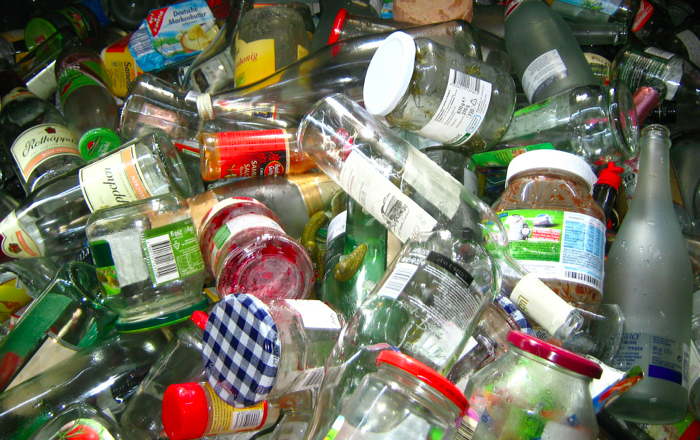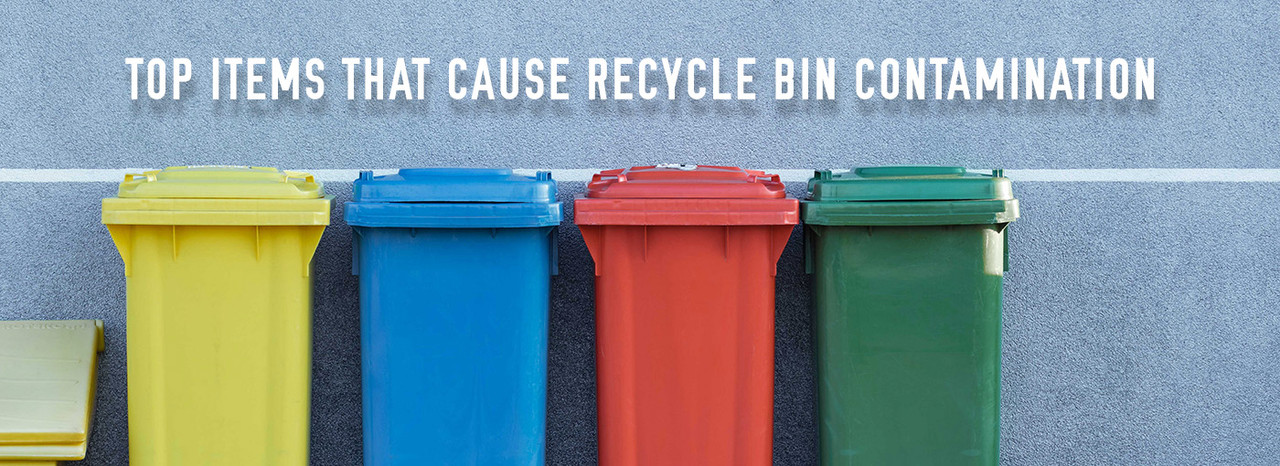The United States is in a waste management crisis. It is estimated that more than 250 million tons of solid waste are generated annually. 50% of this trash is recyclable, but only 34% is ever reused. Per Brigham Young University-Idaho, it costs more to deposit this trash in landfills or incinerate than it would to recycle it, once you factor in the revenue from the recycled material. This means we are essentially burying billions of dollars in our landfills every year.
Recycling, however, is not a simple process. Contamination of the recycling feed reduces the profitability of recycled material, adds to the labor required to remove the contamination, and leads to the rejection of contaminated feed lines – undermining the purpose of recycling in the first place. While there are many different forms of contamination, they all impair the effectiveness of recycling efforts in this country.
This article will look at the major forms of recycling bin contamination and why properly managing this contamination is important for the success of your recycling program.

(Courtesy: Pixabay)
What Is Recycling Contamination?
Recycling plants function according to highly sophisticated systems of controls and procedures. These procedures are designed to quickly and efficiently convert a particular type of waste material into a particular type of post-consumer product. A recycling contaminant is anything that enters this controlled system that the system is not designed to handle, and that may subsequently degrade the quality of the end product. This may include food and organic products, non-recyclable trash, or even other recyclable products like cardboard, metal, or the wrong type of plastic.
Removing these contaminants may require extensive washing, the involvement of human sorters, additional machinery, or secondary levels of chemical or heat treatment. The labor and energy costs detract from the profitability of the post-consumer end product and forces recyclers to decide whether it is economically feasible to process heavily contaminated feed lines. Unprofitable feed lines may end up being incinerated or dumped in a landfill. Contaminants that are not detected can lead to the release of hazardous gases, endangering plant workers, and can seriously damage recycling equipment. Finally, if your business is seen as a consistent source of contaminants, your recycling partners may not wish to do business with you in the future.
Eliminating contaminants completely may be impossible, as recycling is not yet second nature for everyone. However, by understanding the types of contaminants your recycling flow is likely to face, you can understand how to minimize contamination.

(Courtesy: Pixabay)
Type of Recycling Contamination
- Plastic bags. These are the largest source of recycling contamination, chiefly because they are the most common containers used to transport recyclable materials. Bags made with #2 or #4 plastics can be recycled at specialized recycling plants, and some grocery stores will take back store-issued plastic grocery bags. However, these bags are unrecyclable once they become wet or dirty, and the typical recycling plant is not equipped to handle even clean plastic bags without exceptional effort. It is best to reuse plastic bags for as long as possible, as most are filtered out of recycling lines and discarded.
- Food. A person with good intentions may think it helpful to dispose of his take-out food container in the recycling bin. The problem is that the container may not be completely empty, or may be made of paperboard that is now soiled. Such containers cannot be easily cleaned and will end up heading to a landfill. The rule is that if a container cannot be quickly rinsed clean, it is not recyclable.
- Loose shredded paper. Paper is recyclable because of the long fibers it’s made from. Without these long fibers intact, paper breaks down and cannot be easily reformed. If the shredded paper is identified as such at the beginning of the recycling process, it can be made into compatible products, like cardboard. However, if it is mixed with non-shredded paper, it spoils the entire paper batch. A way around this is to use clear plastic bags for transporting shredded paper.
- Brightly colored paper. Brightly colored paper will dye a batch of paper stock, requiring the addition of bleach to salvage a usable product. If the paper has a white core, it is recyclable, as the amount of dye involved is negligible, but a fully dyed piece of paper must be thrown away.
- Plastic. Plastic of type #1 (PET) and type #2 (HDPE) are commonly recyclable. Types #3 through #7 are also recyclable, depending on the recycling facility. The type of plastic is stamped on the bottom of the container in a triangle logo. It is important to know what types of plastic your recycling plant accepts.
- Hazardous materials. Containers used to hold hazardous fluids, like paint, pesticides, and automotive fluids, can be recycled if they are thoroughly cleaned out, but it’s best to check with your recycling facility to verify the requirements for recycling such containers. Containers used to hold bio-hazardous or human waste materials cannot be recycled under any circumstances and must be disposed of properly.
- Frozen food containers. Lined paper containers, such as those used for frozen food, are not recyclable. Their protective outer coatings are made from silicone or plastic, making the paper inside unrecoverable.
- Unrinsed or metal-capped glass. For the same reason food contamination is a problem with food containers, failing to rinse a drink container before recycling it may render it unrecyclable. Metal caps must be recycled separately from their glass containers.
How to Reduce Contaminants
It is not possible to completely remove all recycling contaminants. However, you can make a difference in reducing contaminants through proper education for your staff, active scanning for contaminants during collections, and providing enough containers to properly sort recyclables. A good place to get your recycling bins is Trashcans Unlimited. Trashcans Unlimited offers the best prices on commercial and decorative trash cans and is a trusted source for all your trash can needs.
It makes sense – both economically and ecologically – to recycle. However, it must be done properly in order to be effective. Providing the right tools and education to do the job is one small step you can take toward making recycling a feasible reality for your business.

